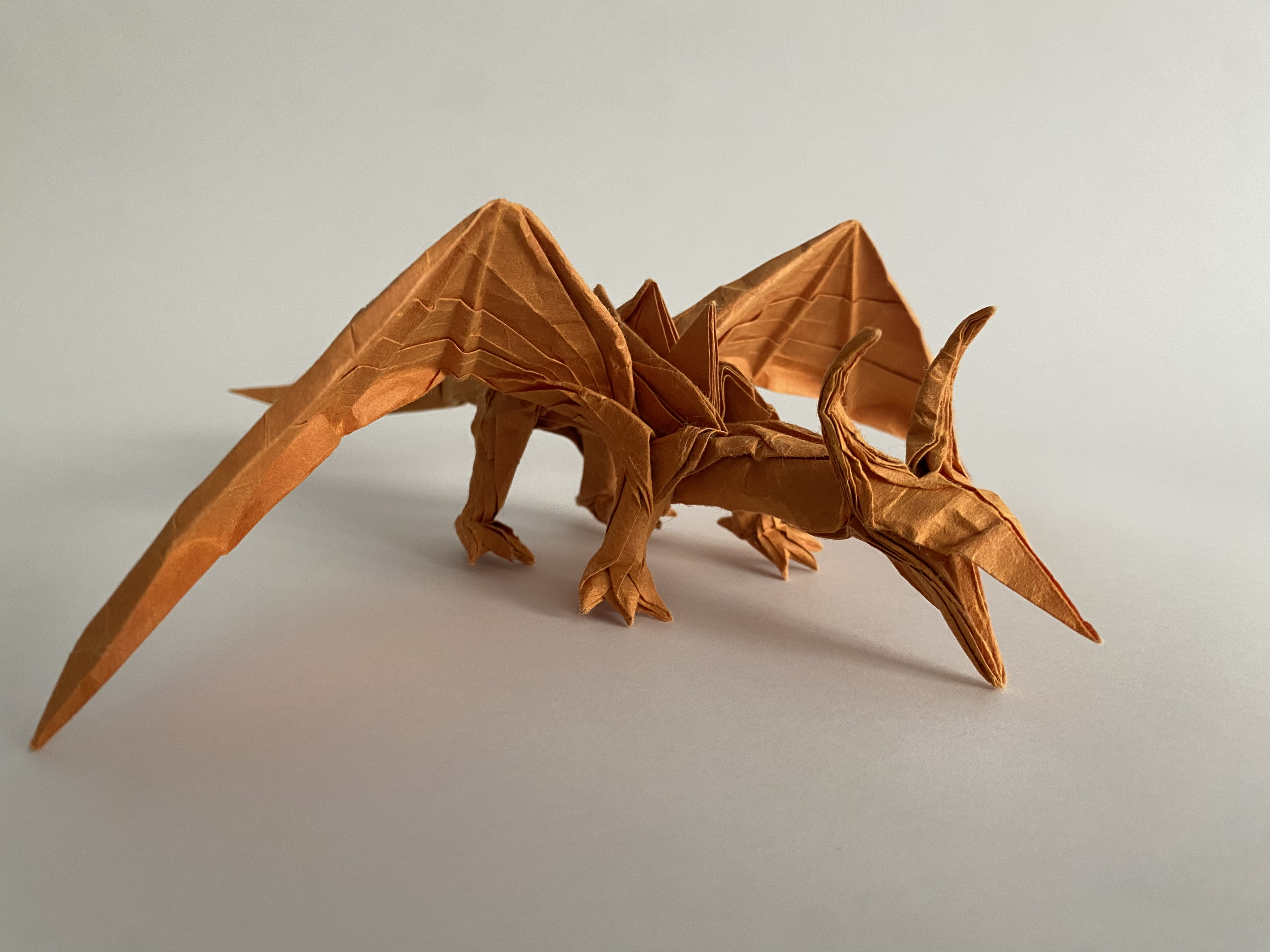
Poison Dragon. Folded by Ronik Bhaskar. Designed by Reza Nagree.
The first postulate of Euclid’s Elements states that two points determine a line. No more, just two. It may so happen that your third, fourth, or even fifth points also fall along the line, but ultimately, it is defined by two points.
I think young origamists often forget that we are bound by the laws of Euclidean geometry when we make art. Every crease is a line on a Euclidean plane. The creases can bisect angles, meet reference points, create parallel lines, but not necessarily at the same time. Take, for example, a diagonal fold through a square of paper. In theory, that fold can bisect two angles, create a line through opposite corners, and place the remaining corners on top of each other. Unfortunately, this isn’t always the case. If your paper is not perfectly square, you cannot do all of those at once. Even if your square is off by a fraction of a millimeter, you can only reach one objective with your crease.
Imperfect folding can come from anywhere, whether that be paper thickness or warping or just human inaccuracy. As errors accumulate in the model, it becomes harder to fix them. Your model diverges further and further from the diagrams until you simply cannot continue folding anymore. As I see it, there are two major methods to improve folding to reduce error accumulation.
The first—rather obvious—method is just to become more accurate. If your errors are smaller, then your accumulated errors will be smaller too. Ultimately, this comes down to practice. Practice simple models, intricate models, on big paper, on small paper. Expose yourself to more types of folds in various scenarios, and over time, you will develop a better control of the paper and a stronger understanding of accuracy. After years of folding, I have the accuracy to fold that dragon in the beginning, but I can also point out countless moments throughout the folding process during which I could feel my folds were off by a fraction of a millimeter. I’m not accurate enough to fix everything, but I do my best.
Sometimes my inaccuracies caused issues, but other times they didn’t, which brings me to the second method: understand which errors the model can tolerate. Depending on the situation, an angle bisector that misses a reference may be better than the alternative. Other times, you may prefer the reference over the angle bisector. Learning which errors are preferable in which scenarios can allow you to make errors without greatly impacting the final model. This intuition takes time to build, but you can also just ask experienced folders when you get stuck. At the Chicago Origami Convention, a kid had an issue where one of his folds could only hit one of two references, so he asked me what to do, and I told him which reference to follow and which to ignore.
I constantly think about which references matter most. Even when I was cutting the paper to fold the dragon, I had to decide which properties of the square were most important. I am quite bad at cutting squares, so I knew it wasn’t going to be perfect. In the end, I decided I wanted the diagonals to line up with the corners properly, so I prioritized that, and my decision helped as I folded the dragon the next day.
Inaccuracy is inevitable. Either you or your paper will succumb to imperfection, and you must figure out how to move forward. Every decision has its merits, and understanding which errors matter can help you make that decision. Choose the two most important points for your fold, and don’t worry about the rest. You can’t control whether the third, fourth, or fifth point will lie along your crease, but you can choose two, so make the choice. We may be bound by the fundamental laws of geometry, but you still decide where your crease goes.
